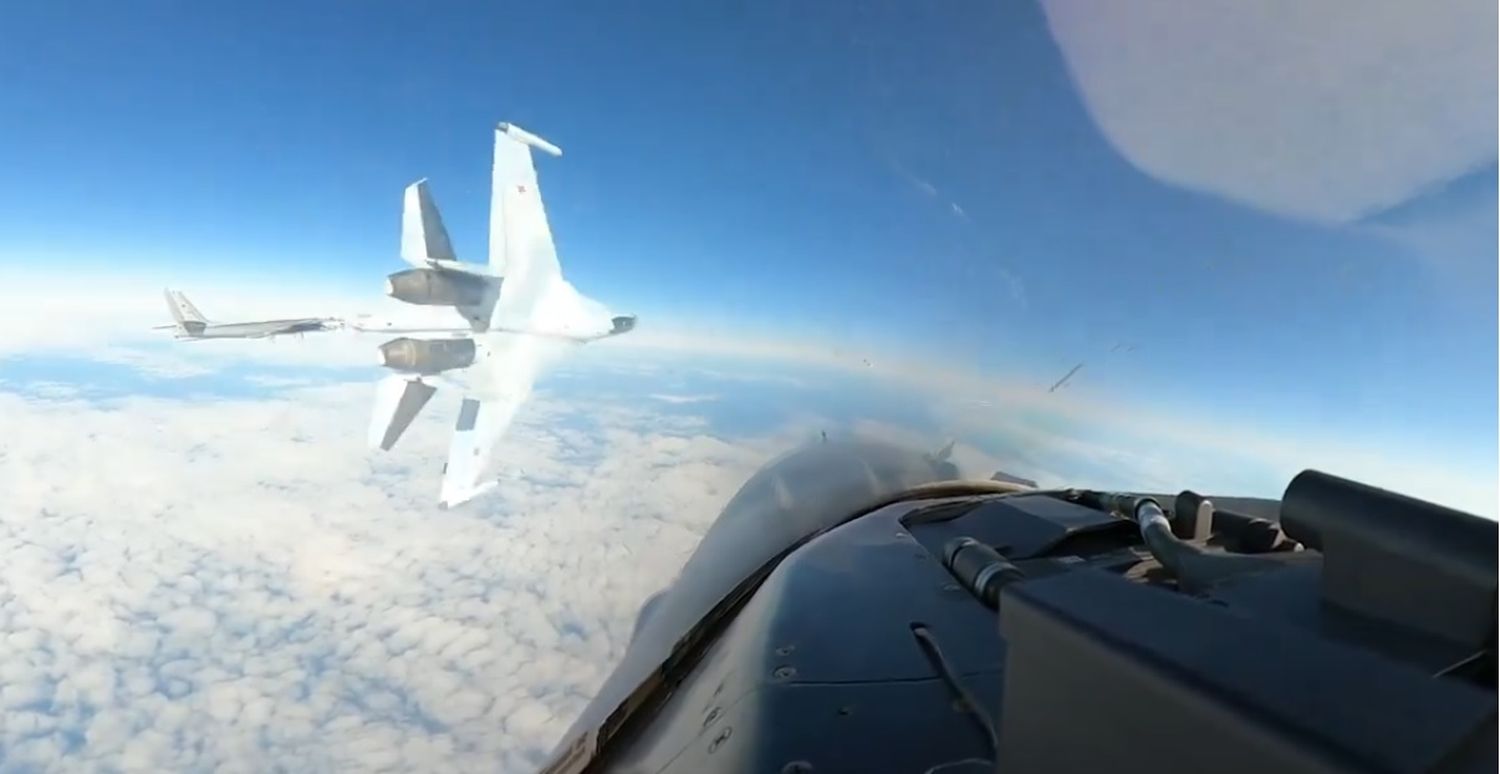The “close encounter” with the Russian Su-35 fighter took place on September 23, when U.S. Air Force (USAF) F-16 fighter jets conducted a routine intercept of Russian aircrafts in the Alaskan ADIZ.
On that day, the North American Aerospace Defense Command (NORAD) issued a statement reporting that it detected and tracked four Russian military aircrafts (two Tu-95 “Bear” strategic bombers escorted by two Su-35 fighters) operating in the Alaskan Air Defense Identification Zone (ADIZ). This Russian activity in the Alaskan ADIZ occurs regularly and is not considered a threat, although the frequency of these incursions has increased recently.
An ADIZ is a designated airspace where aircraft are identified as they approach a nation’s territorial airspace. This enables the armed forces to react swiftly to potential threats. Nevertheless, this particular operation deviated from the norm when one of the Su-35s executed an exceptionally close maneuver, passing within mere meters of an F-16’s nose in a provocative and hazardous demonstration.
“On Sept 23, 2024, NORAD aircraft flew a safe and disciplined intercept of Russian Military Aircraft in the Alaska ADIZ. The conduct of one Russian Su-35 was unsafe, unprofessional, and endangered all – not what you’d see in a professional air force.” – Gen. Gregory Guillot pic.twitter.com/gXZj3Ndkag
— North American Aerospace Defense Command (@NORADCommand) September 30, 2024
Gen. Gregory Guillot called the Russian pilot’s conduct “unsafe, unprofessional and dangerous,” adding that it was “not what you would see in a professional air force.” A miscalculation on the part of the Russian pilot could have triggered an air collision with unpredictable consequences, both for the crews and for escalating tensions between the two powers.


Comentarios
Para comentar, debés estar registrado
Por favor, iniciá sesión